I’ve been using Unbounce almost every day for over a year now, and I’ve gotten to know it inside and out. From setting up quick landing pages to running split tests for clients, it’s been a regular part of my workflow. After spending so much time with it, I felt it was the right moment to write an honest review based on real experience—not just the marketing pitch.
If you run ads, sell products, or try to collect leads online, you already know how much a landing page can make or break your results. A strong page helps turn clicks into customers. A weak one just burns your ad budget.
Unbounce has been around since 2009, but lately, it’s grown into much more than just a drag-and-drop builder. In 2025, it’s using smart AI tools to help you write copy, test your designs, and even send each visitor to the version of your page they’re most likely to respond to.
And here’s something worth noting: businesses using Unbounce’s AI features have seen up to 30% more conversions compared to those who don’t. That’s a big deal if you’re serious about getting better results from your traffic.
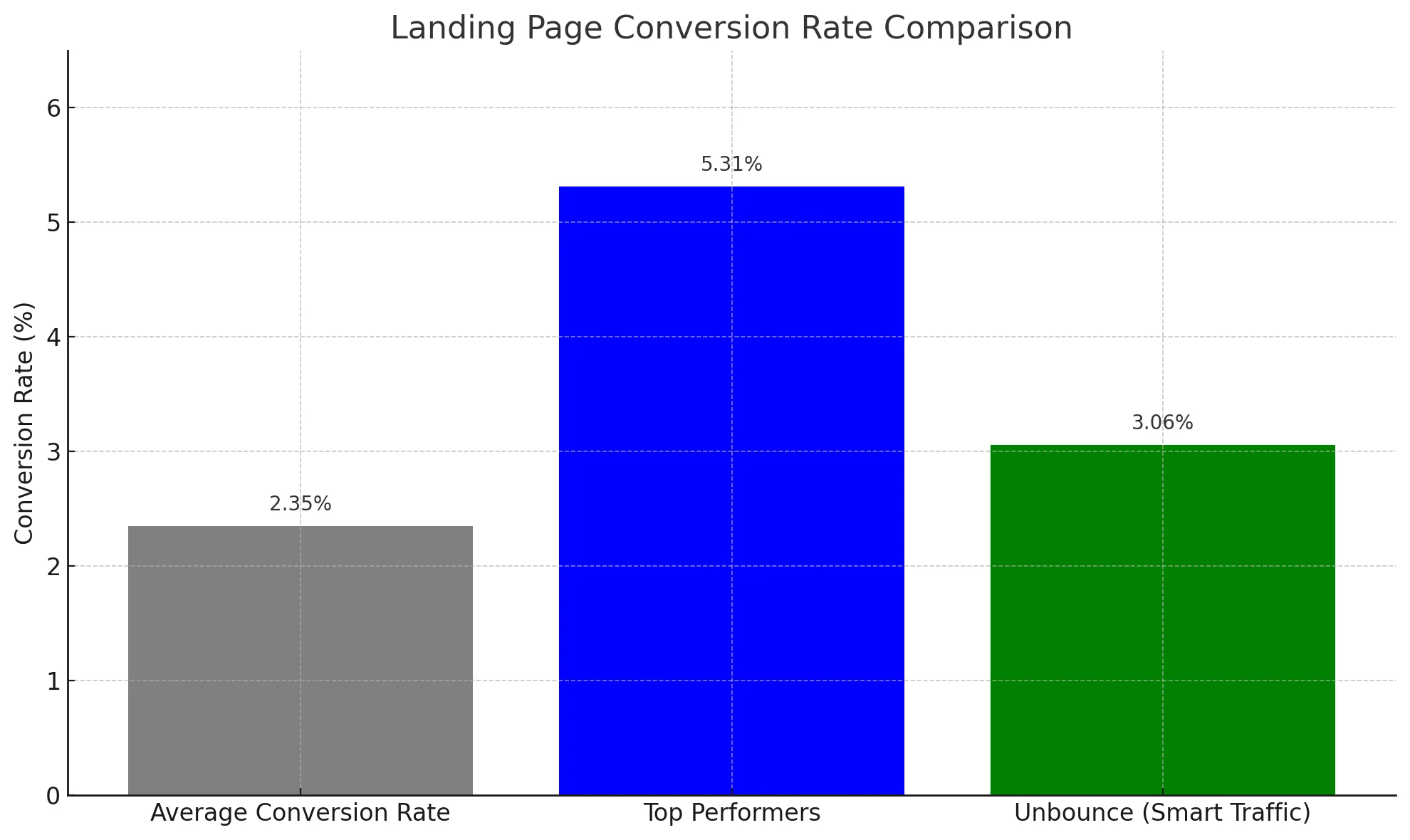
In this review, I’ll walk you through what Unbounce does well, where it might fall short, and whether I still think it’s worth using in 2025.
Unbounce Overview
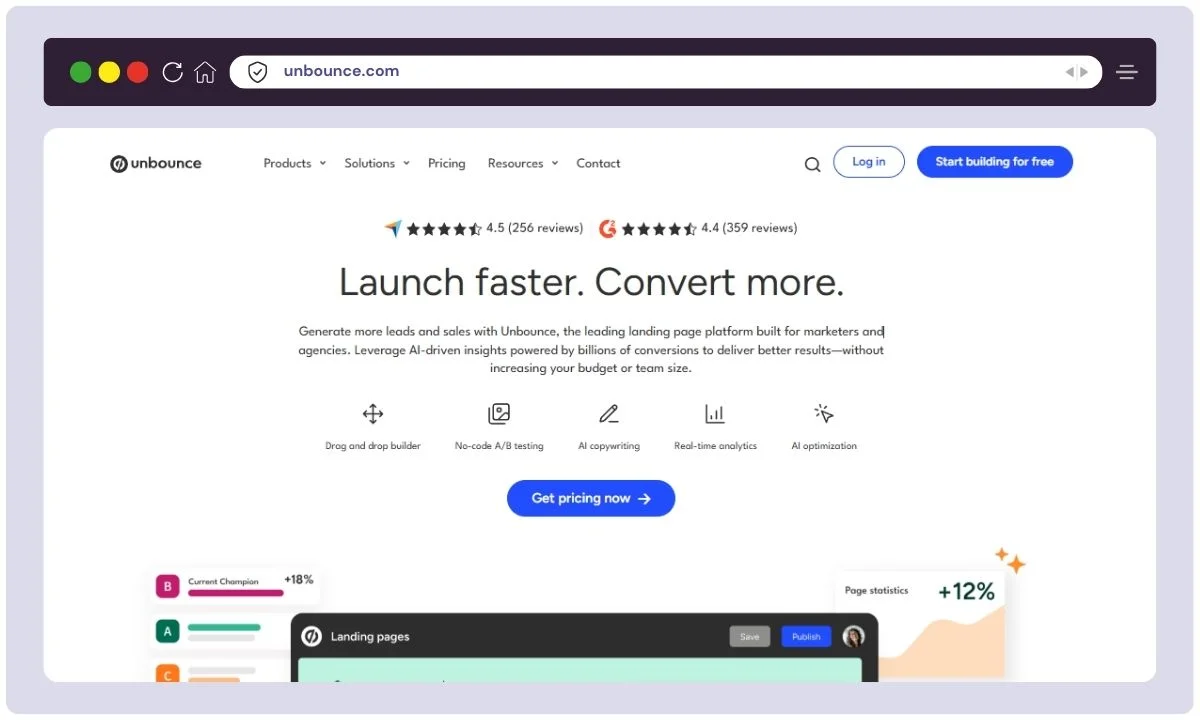
| Parameter | Details |
|---|---|
| Product Name | Unbounce |
| Official Website | https://unbounce.com/ |
| Developers | Unbounce Inc. |
| USPs | AI-powered optimization, drag-and-drop builder |
| Category | Landing Page Builder |
| Integrations | Zapier, HubSpot, Salesforce, Mailchimp, WordPress |
| Best For | Marketers, agencies, eCommerce, SaaS |
| Support Options | Email, live chat, help center |
| Documentation | Extensive knowledge base and tutorials |
| Company HQ | Vancouver, Canada |
| Starting Price | $99/month |
| Alternatives | Instapage, Leadpages, ClickFunnels, GetResponse |
| Affiliate Program | Yes |
| Money Back Guarantee | 14-Day Free Trial |
Unbounce is a tool that helps you build high-converting landing pages without needing to write a single line of code. It’s mainly used by marketers, agencies, and business owners who want to turn their website visitors into leads or customers.
The company started back in 2009 and has grown into one of the most trusted landing page platforms out there. Over the years, they’ve added a lot of smart features, especially for people who want better results without doing everything manually.
What makes Unbounce stand out is how flexible it is. You can start with one of their pre-built templates or create something totally from scratch. You also get access to AI-powered tools that help write your copy, test different versions of your pages, and even improve how you send traffic to those pages—all aimed at boosting your conversions.
Whether you’re running Facebook ads, Google Ads, or promoting something through email, Unbounce gives you the tools to quickly build and test pages that are focused on one thing: getting results.
Unbounce Features
After using Unbounce for a good amount of time, I can say it’s packed with features that actually help you get better results—not just look good on paper. Here are some of the most useful ones:
1. Smart Builder
This is Unbounce’s newer, AI-powered builder. It’s made for people who don’t want to spend hours designing. You answer a few questions, and it builds a page layout for you. You can still move things around or change the design, but it gives you a solid starting point that’s focused on converting visitors.
2. Classic Builder
If you prefer full control, the Classic Builder is still there. It works like a drag-and-drop editor, letting you place elements exactly where you want them. This one’s great for designers or anyone who wants to fully customize their layout.
3. Smart Copy (AI Copy Assistant)
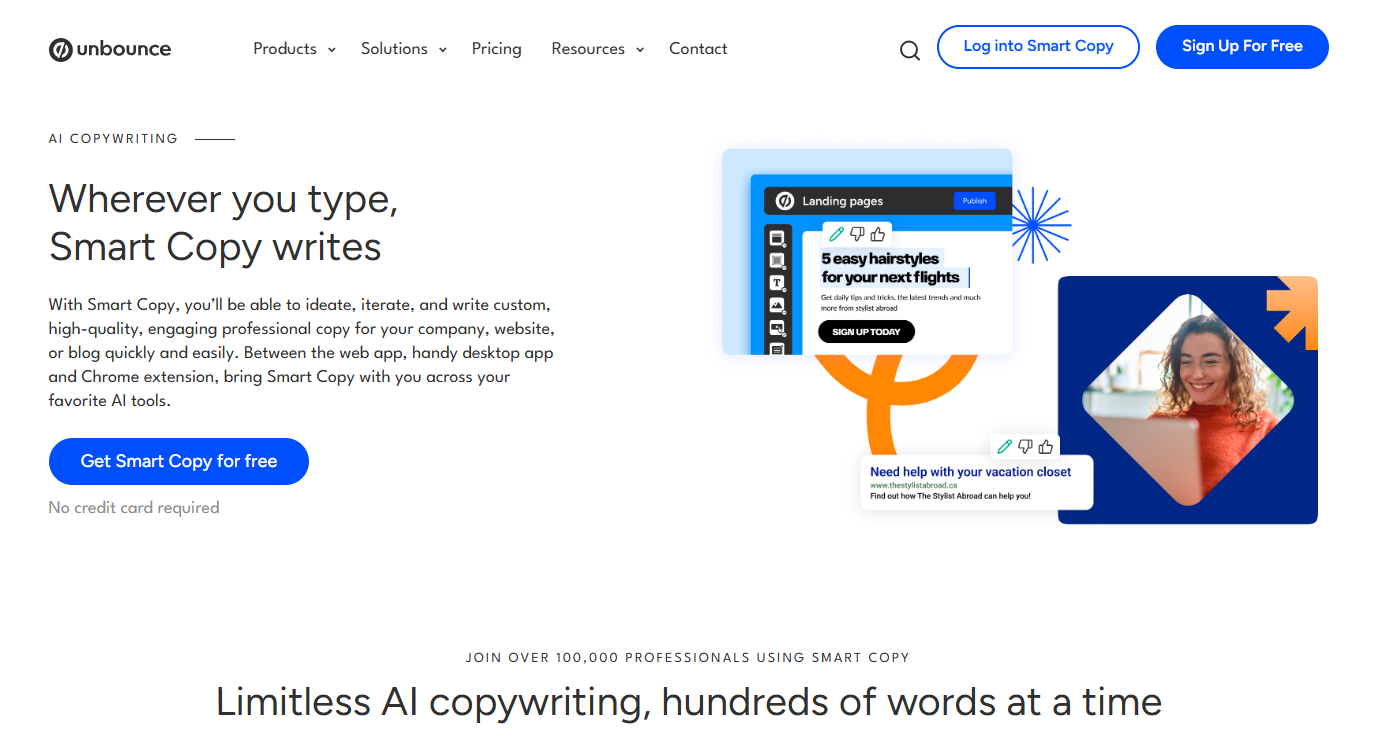
Writing landing page copy can be hard. Unbounce’s AI writing tool helps by suggesting headlines, CTAs, and body text. It’s not perfect, but it gives you a great head start—especially if you’re stuck staring at a blank screen.
4. Smart Traffic
This feature uses AI to test different versions of your landing page and automatically send visitors to the one that’s performing the best. I’ve personally seen noticeable gains in conversion rates using this. It’s like A/B testing, but smarter and faster.
5. A/B Testing
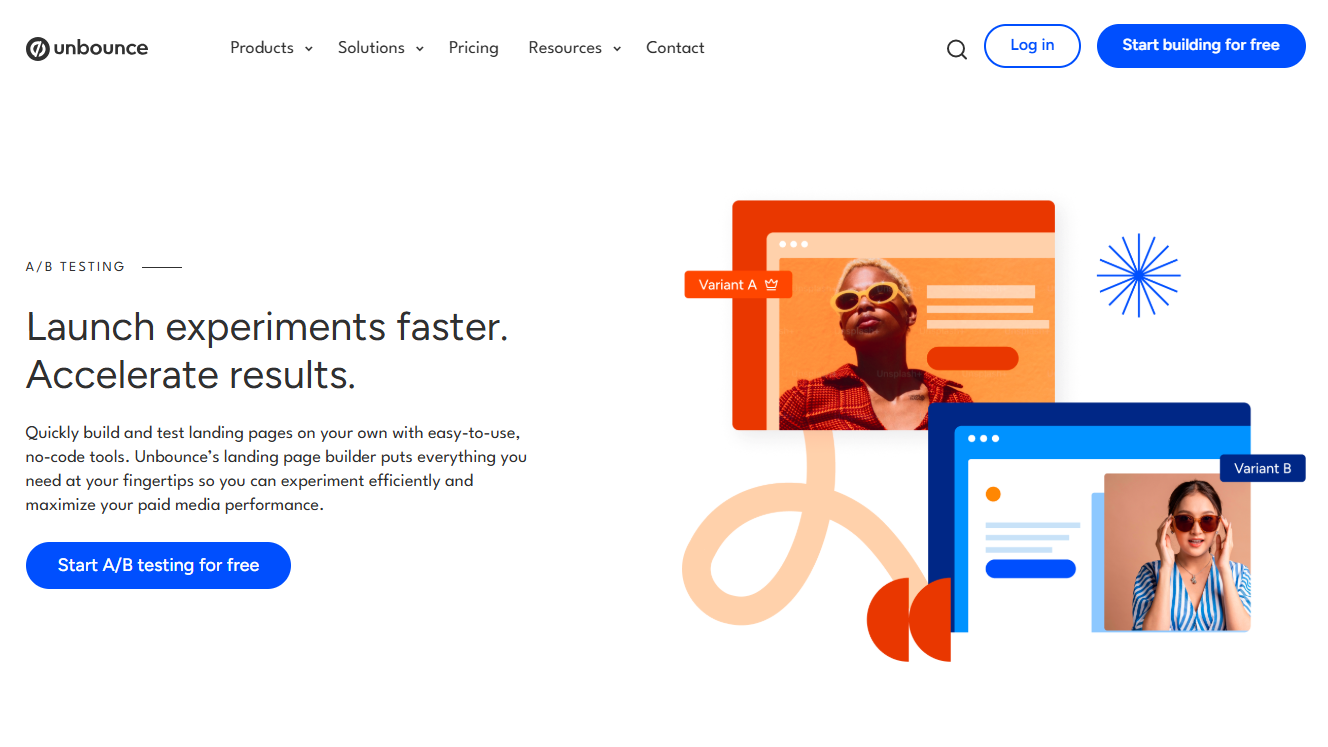
You can still run traditional A/B tests too. Test different headlines, layouts, or images to see what works best. The interface makes it easy to set up and track results.
6. Popups & Sticky Bars
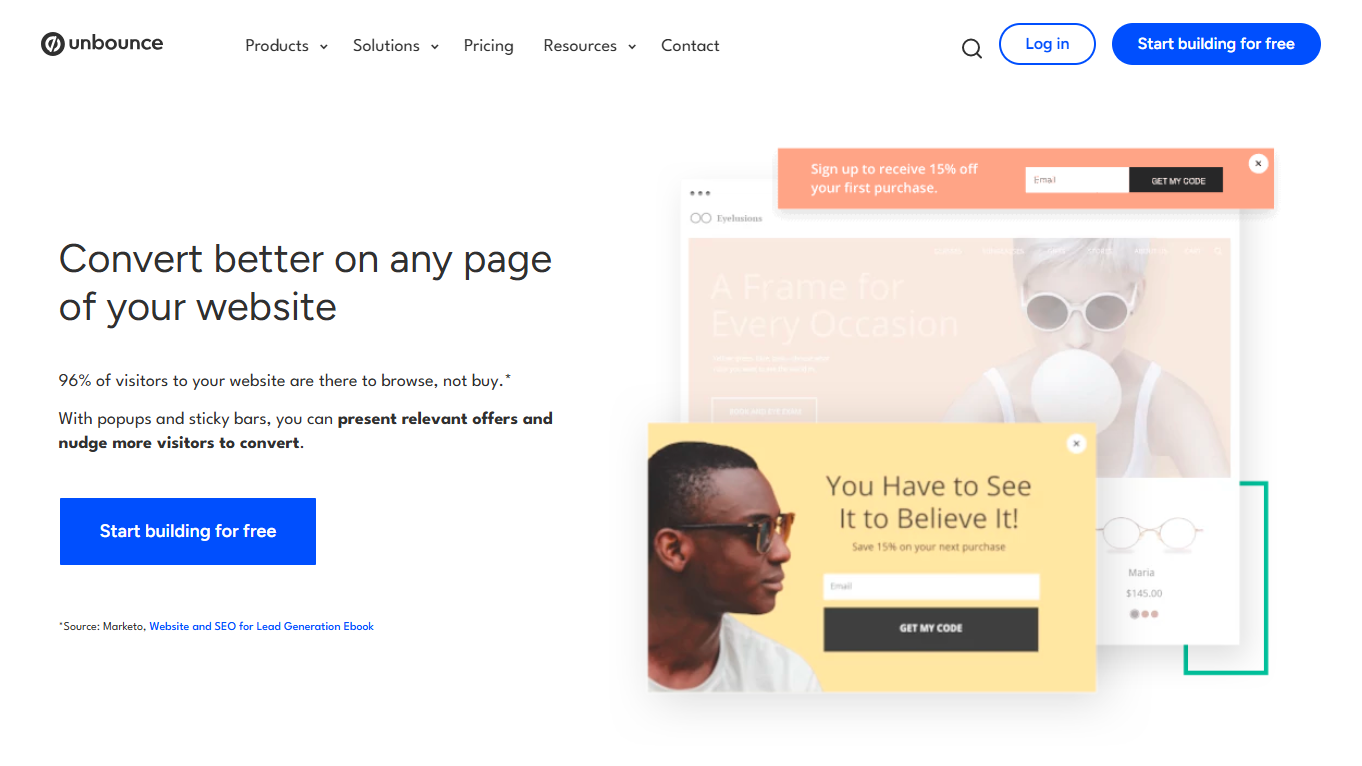
Unbounce also lets you create popups and sticky bars that show up based on user actions. These are great for promoting time-sensitive offers or capturing emails before someone leaves your site.
7. Mobile Optimization
Every page you build is mobile-responsive by default. You can also edit the mobile version separately if you want to tweak how it looks on phones or tablets.
8. Templates Library
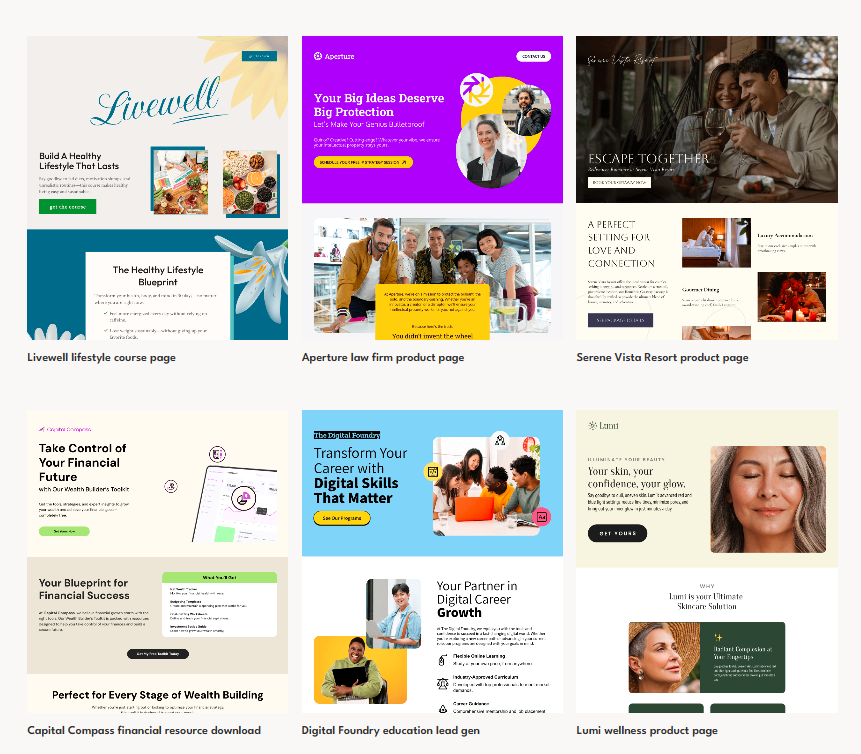
Unbounce offers hundreds of templates designed for different industries and goals—lead capture, product launches, webinars, and more. They’re clean, modern, and easy to customize.
9. Dynamic Text Replacement

If you’re running paid ads, this is super handy. It automatically swaps out certain words on your landing page to match the ad a visitor clicked. This keeps things relevant and improves Quality Score in Google Ads.
Ease of Use
One of the things I really like about Unbounce is how beginner-friendly it is, even though it offers advanced features. Whether you’re building your first landing page or have years of experience, it’s easy to get the hang of.
User Interface and Onboarding

The dashboard is clean and simple. Everything is where you’d expect it to be. When you first sign up, Unbounce walks you through a few quick setup steps, and there are tooltips and help articles built right into the platform. You don’t need to dig around to figure out what to do next.
They also have a really solid help center and video tutorials, which helped me a lot in the beginning.
Learning Curve for New Users
If you’ve never built a landing page before, there’s a small learning curve—but it’s not hard. The Smart Builder does a lot of the heavy lifting, and if you want more control, the Classic Builder gives you that freedom. I’d say within an hour or two of playing around, most people can build a good-looking, functional page.
Also, since everything is visual and drag-and-drop, you don’t need any coding skills to make changes or launch your page.
Templates and Customization Options

Unbounce has a huge library of ready-made templates. They’re sorted by goal (like lead gen, product sales, webinar signups), which makes it easier to pick the right one. I’ve used them a lot when I want to move fast or need some design inspiration.
You can customize every part of your page—fonts, colors, layouts, forms, images—you name it. And if you’re more advanced, you can even add your own HTML, CSS, or JavaScript.
Integrations
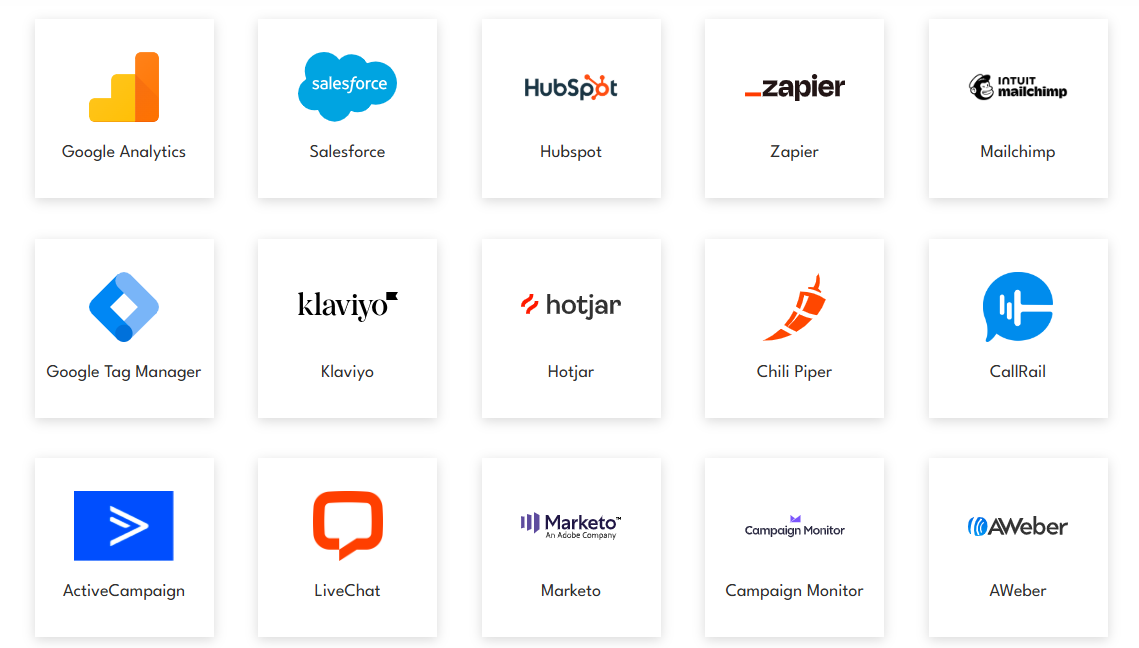
Unbounce works really well with other tools, which is a huge plus. Whether you’re using it for lead generation, email marketing, or sales, it connects smoothly with the apps you probably already use.
Native Integrations
Unbounce offers built-in integrations with many popular platforms. Some of the ones I’ve used personally include:
- Mailchimp – to send leads directly to email lists
- HubSpot – for syncing contacts and running automated campaigns
- Salesforce – to push new leads into sales pipelines
- ActiveCampaign, Campaign Monitor, Marketo, and others
Setting these up is super simple. You just log in to your account within Unbounce, pick the fields you want to connect, and you’re good to go.
Zapier and Webhooks
If Unbounce doesn’t have a direct integration for your tool, you can use Zapier to connect it to thousands of other apps. I’ve used Zapier to send leads into Google Sheets, Slack, and Trello with just a few clicks.
For more advanced users, webhooks give you full control to send lead data wherever you want, in real time. This is great if you’re working with a custom CRM or need something specific.
New Integrations in 2025
In 2025, Unbounce added or improved support for a few more tools, including:
- Notion (for collecting form data or content organization)
- ClickUp (lead tracking and automation workflows)
- Better support for GA4 and newer analytics tools
These updates show that Unbounce is keeping up with what modern marketers are using every day.
Performance and Results
I’ve used Unbounce across different projects, and one thing that stands out is how reliable the results are when the pages are set up properly. It’s not just about having a nice design—Unbounce actually helps you improve your conversion rates.
Conversion Rates
In my experience, landing pages built with Unbounce tend to convert better than pages made with general website builders like Wix or WordPress. That’s because they’re focused on one goal—like collecting emails or getting someone to click a button—and everything on the page is built around that.
Unbounce claims that businesses using their Smart Traffic feature see up to 30% more conversions, and I can believe it. I’ve seen a noticeable bump in results when I turn it on, especially for paid ad campaigns where every click counts.
Page Speed
Unbounce pages load fast, which matters a lot—especially if you’re driving traffic from mobile ads. Google also favors faster pages, so you might even see better ad performance just from using a properly optimized Unbounce page. They’ve clearly worked on improving speed in 2025, and it shows.
Mobile Responsiveness
All templates are mobile-ready by default, and you can adjust the mobile version separately. This is a big deal because more than half of traffic usually comes from mobile devices. I’ve built pages that look great on desktop but needed a few tweaks for mobile—and Unbounce made that easy to fix.
Real-World Example
On one of my recent campaigns, switching from a basic in-house landing page to a version built in Unbounce increased sign-ups by 22%. I didn’t even change the offer—just used a cleaner layout, stronger headline (thanks to Smart Copy), and ran a quick A/B test. That kind of improvement makes a real difference over time.
Unbounce Alternatives
Unbounce is a strong landing page builder, but it’s not the only option out there. If you’re still deciding, it helps to see how it compares to other popular tools.
Below is a side-by-side look at some of the top alternatives, based on key features that matter most—like ease of use, pricing, AI tools, A/B testing, and more.
| Feature | Leadpages | Landingi | Webflow | Instapage | Pagecloud |
|---|---|---|---|---|---|
| Ease of Use | Very easy | Very easy | More complex | User-friendly | Simple |
| AI Copy/Design | No | Basic AI assistant | No | AI-based personalization | No |
| A/B Testing | Only on higher plans | Included | Not built-in | Advanced A/B testing | No |
| Templates | 200+ templates | 300+ templates | Fully custom (but manual) | High-quality layouts | 100+ templates |
| Mobile Responsive | Yes | Yes | Yes | Yes | Yes |
| Analytics | Basic | With integrations | Custom setup | In-depth | Google Analytics only |
| Pricing (Monthly) | From $49 | From $39 | From $18 (CMS-focused) | From $199 | From $24 |
| Best For | Small businesses | Beginners, marketers | Designers, developers | Enterprise, agencies | Small brands, simple sites |
| Free Trial | Yes (14 days) | Yes (14 days) | Yes (Designer preview) | Yes (14 days) | Yes (14 days) |
Who Should Use Unbounce?
Unbounce isn’t for everyone—but if you fall into one of the categories below, it might be a perfect fit.
1. Marketers Who Run Paid Ads
If you’re running Facebook Ads, Google Ads, or any kind of paid traffic, Unbounce is made for you. It helps you create focused landing pages that are built to convert, without distractions. Plus, Smart Traffic and A/B testing can help you get more out of every dollar you spend.
2. Agencies
Agencies will love how fast they can spin up pages for different clients. You can create multiple workspaces, manage permissions, and build reusable templates. It’s a solid option if you’re handling campaigns for several brands at once.
3. Entrepreneurs and SaaS Startups
If you’re launching a product, testing a new idea, or collecting leads for your software, Unbounce makes it easy to build a high-converting page fast—without hiring a developer or designer.
4. Business Owners Who Don’t Code
You don’t need to know HTML, CSS, or JavaScript to use Unbounce. The drag-and-drop interface, Smart Builder, and pre-designed templates make it easy for non-techies to build pro-looking pages.
5. Growth Teams and Conversion Optimizers
If your job is to boost conversions or test landing page variations, Unbounce gives you the tools you need: fast testing, AI copy tools, heatmaps (via integrations), and analytics that help you make better decisions.
FAQs
What is Unbounce used for?
Unbounce is a landing page builder designed to help marketers, businesses, and agencies create high-converting pages without coding. It’s mainly used to improve conversion rates for paid ads, lead generation, and product promotions.
Is Unbounce good for beginners?
Yes, Unbounce is beginner-friendly. It offers drag-and-drop editing, AI-assisted tools, and a library of templates that make it easy for non-tech users to build and launch landing pages quickly.
Does Unbounce use AI?
Yes, Unbounce has several AI-powered features like Smart Builder, Smart Copy, and Smart Traffic. These tools help with writing content, designing pages, and optimizing performance based on how visitors behave.
Can I do A/B testing with Unbounce?
Absolutely. Unbounce allows you to run A/B tests to compare different versions of your landing page. You can test headlines, layouts, images, and more to see what converts better.
Is Unbounce mobile-friendly?
Yes, all Unbounce landing pages are mobile-responsive by default. You can also customize how your pages look on mobile devices to make sure everything fits and functions properly.
Does Unbounce integrate with other tools?
Unbounce integrates with many marketing tools like Mailchimp, HubSpot, Salesforce, and ActiveCampaign. It also works with Zapier and webhooks, which let you connect it to thousands of other apps.
How much does Unbounce cost per month?
Unbounce pricing starts at $99 per month for the Launch plan. Higher-tier plans offer more traffic limits, advanced features like Smart Traffic, and additional users or workspaces.
Is there a free trial for Unbounce?
Yes, Unbounce offers a 14-day free trial with access to most of its features. You don’t need a credit card to sign up, which makes it easy to test before committing.
Can Unbounce be used for eCommerce?
While Unbounce isn’t a full eCommerce platform, it works well for product landing pages and sales funnels. You can link directly to your store or checkout page and track conversions easily.
Conclusion
I’ve been using Unbounce for quite a while now across all kinds of campaigns, and honestly, it’s still one of my go-to tools in 2025. Sure, it’s not the cheapest option out there, and it’s not flawless—but if you’re serious about getting results, it gives you everything you need to create high-converting landing pages without needing to code a single line.
What really stands out this year are the AI features. Tools like Smart Builder, Smart Copy, and Smart Traffic don’t just save time—they actually help you get better results. That’s a big win, especially if you’re juggling multiple campaigns or want to improve performance without overcomplicating things.
Unbounce is best for folks who are running ads, generating leads, or doing serious digital marketing work. If you just want a simple site and don’t care much about testing or conversions, one of the more budget-friendly tools might be a better fit.
But if you want to make every click count and you care about turning visitors into customers, Unbounce is definitely worth trying out.